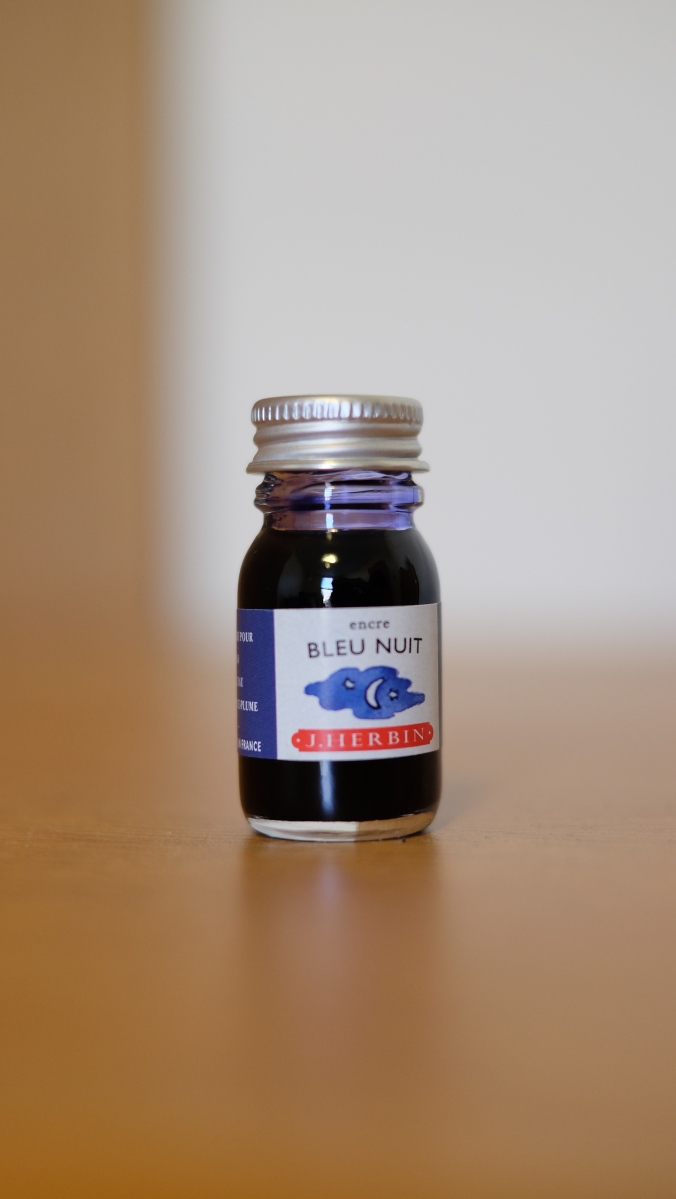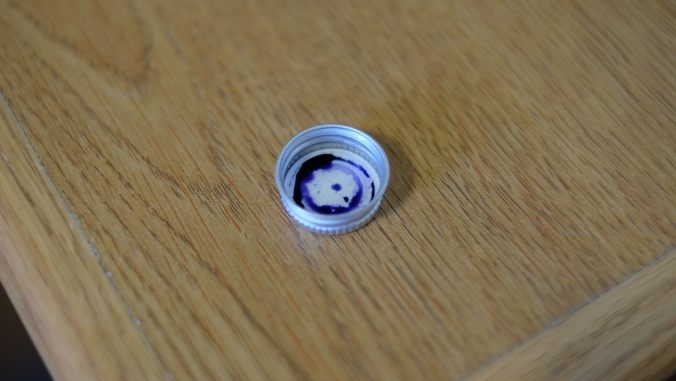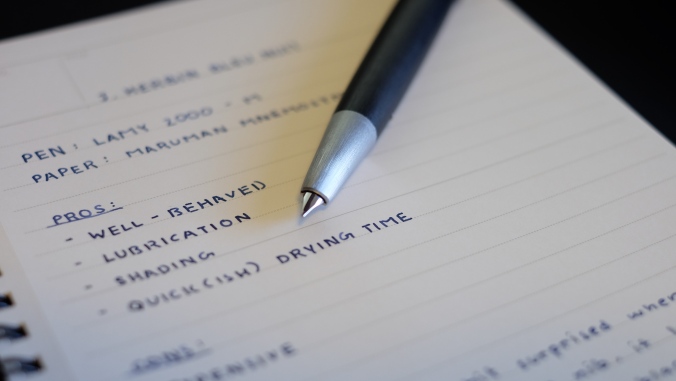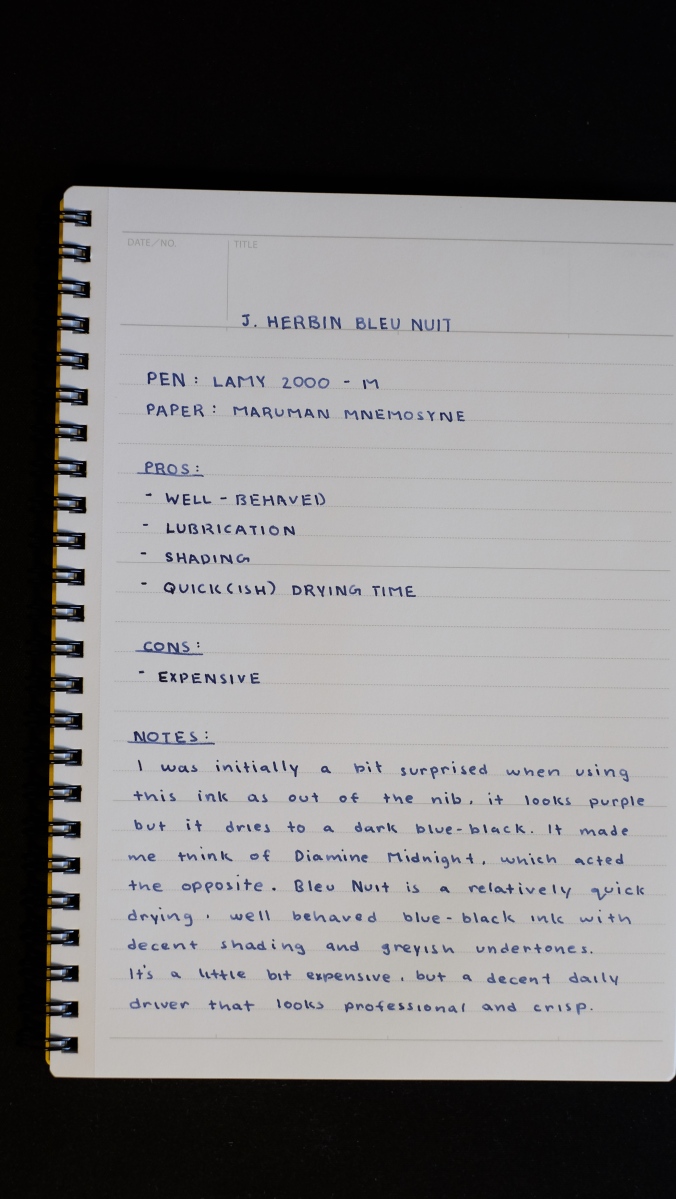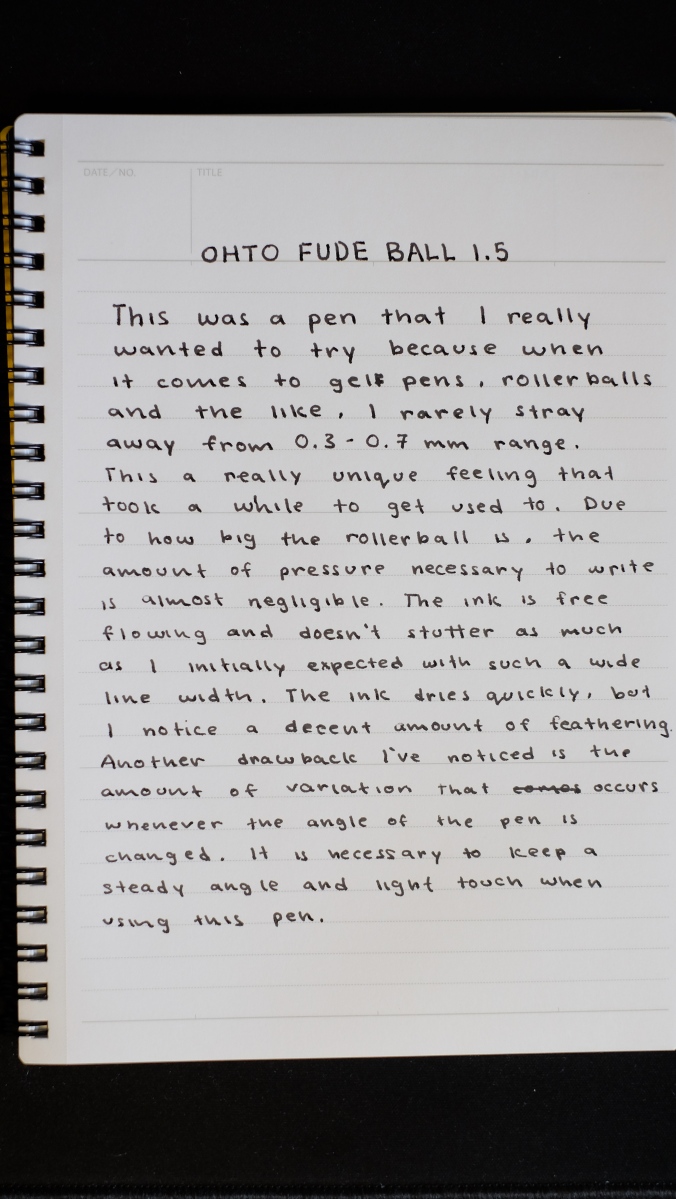
I really wanted to try a more unique pen as I was getting bored with the standard 0.4mm and 0.7mm rollerballs that I have reviewed in the past. I saw the Ohto Fude Ball 1.5 in my recommended list of products when I was purchasing some notebooks and pens to review on JetPens. It struck me as slightly odd due to how big the line width was. Usually, the size of 1.5mm is something I’ve only experienced on my Lamy Safari with the 1.5 calligraphy nib. Having that same size in rollerball was something that sounded really odd and not my taste, but sometimes, to find something you like, you need to first get out of your comfort zone.
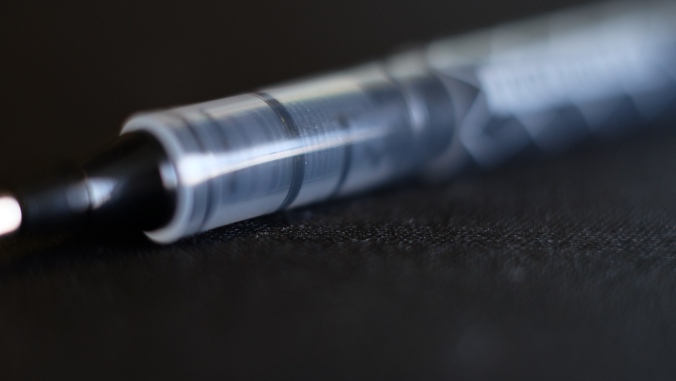
I can say with certainty that this was a hit and miss for me. I tend to write a little on the smaller side, which has been a characteristic of my writing since childhood. This pen forced me to write larger than I was comfortable with and hence, my letters were all out of sorts and crooked as can be seen in the written review above. There was no grip on the pen which made it very easily shift around my hand, causing the line width to vary sometimes from letter to letter. It took me a while to get a solid straight grip that didn’t vary in angle, but it was difficult to maintain for a long writing session. The ink was a little finicky and feathered on most of the papers I had which made it difficult to take notes in class.

Some of the positives that come with the rollerball being this wide is the amount of pressure you have to put when writing is nearly negligible and the pen can easily slide across the page without effort. The problem with this is that it makes it difficult to keep a steady angle of writing. The pen itself is really lightweight and slightly translucent so you can keep track of how much ink is left. With a 1.5mm line width, I’d expect the level will go down quite quickly.
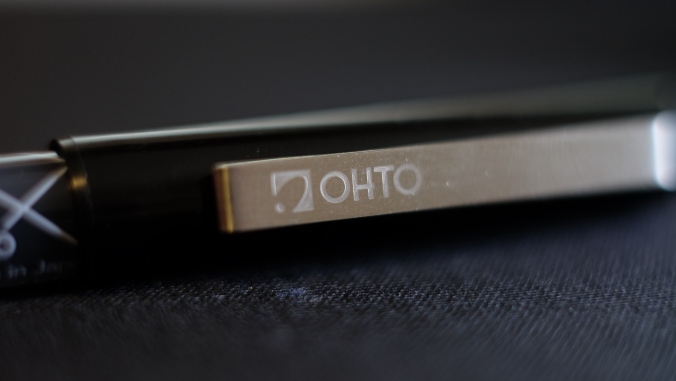
Overall, I wasn’t very impressed with the Ohto Fude Ball 1.5. Maybe it’s just not my cup of tea, but I’m honestly happy I tried something different. The monotony of reviewing pens with the same characteristics can really get to you, so it was nice to switch things up for once. Although it didn’t work out for me, if you’re looking for an extra wide rollerball with a lot of line variation, this is one pen you can definitely give a try.
